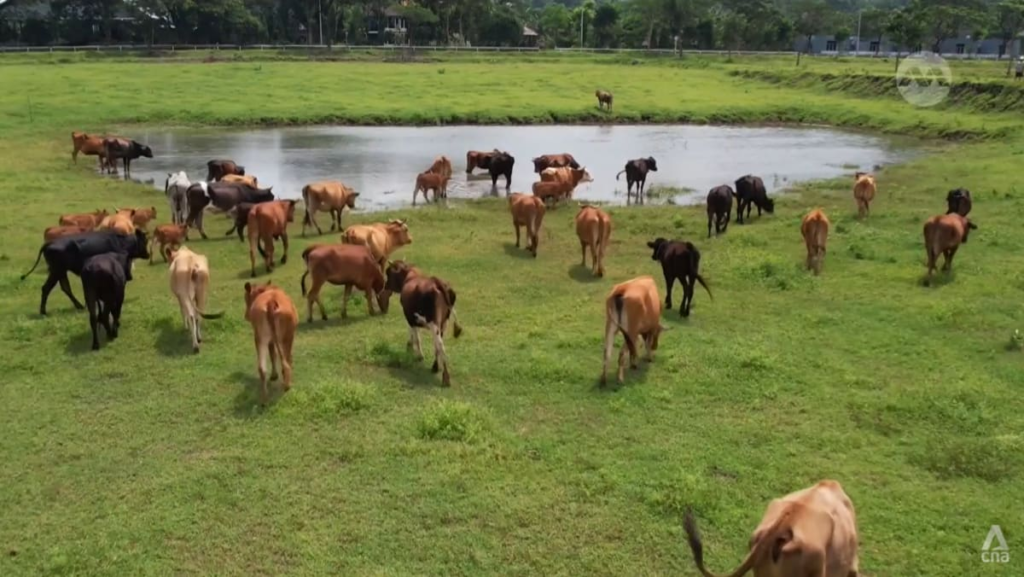Gosyim Romansyah, for instance, gets about 100 litres of milk per day from the 10 cows on his farm.
He earns about 12 million rupiah (US$730) a month from selling the milk in the local market.
The 35-year-old wants more income but increasing milk production is difficult.
“If I increase the cow population, I have to increase the amount of grass. It is easy to buy cows, but procuring their feed is difficult,” said Gosyim, who took over the family farm from his father 12 years ago.
He added that while grass is plentiful during the rainy season, there is simply not enough for more cattle to graze on during the dry season.
For many farmers, Indonesia’s dense population and competing demands for land – such as palm oil plantations, rice cultivation, and other crops – restrict the availability of land for cattle grazing.
SHORTAGE OF COWS AND MILK
Indonesia currently imports more than 80 per cent of its milk to meet domestic demand.
That deficit is expected to deepen even further as the nation rolls out its free-meal programme to feed more than 80 million students and other vulnerable groups.
The programme, a key election promise of Indonesian President Prabowo Subianto, aims to provide nutritious food – including milk – to fight malnourishment.
The Agriculture Ministry estimates the milk production shortage could reach 8.5 million tonnes – 4.9 million tonnes of milk are needed for regular consumption and 3.6 million tonnes for the free meal programme.
There are already tensions between farmers and corporations, with some accusing milk processing facilities of favouring imported milk for being cheaper.
Last September, dairy farmers in Central and East Java bathed themselves in milk in the city centre to express their outrage, demanding the government give more incentives to local farmers and reduce dependence on milk imports.
https://www.channelnewsasia.com/asia/indonesia-cattle-cow-milk-dairy-farmers-free-meal-programme-5054326


